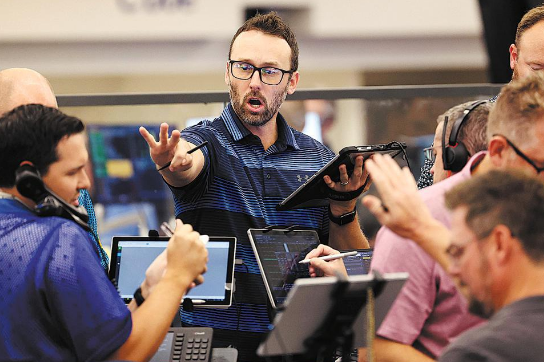The US interest rate hike cycle may last longer than expected, underlining the need for China to buffer against external headwinds by boosting domestic demand while paying heed to cross-border capital flow stability, experts said on Thursday.
They commented as the US Federal Reserve delivered a third consecutive 75-basis point interest rate hike to beat inflation on Wednesday, lifting the federal funds rate to a new target range of 3 percent to 3.25 percent.
More outsized rate hikes are in the pipeline as Fed policymakers project the federal funds rate to rise to 4.4 percent by the end of the year, significantly higher than 3.4 percent projected in June.
The rate hike cycle may also last longer than expected. Fed policymakers expect the federal funds rate to come in at 4.6 percent by the end of next year and 3.9 percent by the end of 2024, indicating that rate cuts may not come until 2024, defying expectations that the Fed may start rate cuts next year.
Officials and experts warned that the Fed’s stronger and longer-than-expected rate hike cycle could undermine the world economy by heightening economic recession risks, deflating nondollar currencies and causing capital outflows from many emerging economies while threatening their debt sustainability.
Foreign Ministry spokesman Zhao Lijian said at a news briefing on Thursday that the Fed’s aggressive rate hikes have exposed many developing economies to the ramifications of currency depreciation, capital outflows and a rising debt burden, adding pressures to the global economy.
With the US dollar index hitting a two-decade high, the onshore exchange rate of the renminbi against the dollar weakened to 7.09 on Thursday, compared with Wednesday’s close of 7.0535.
Chinese stocks edged down on Thursday, with the benchmark Shanghai Composite Index down 0.27 percent to close at 3,108.91 points.
Thanks to a vast domestic market and the more flexible exchange rate of its currency, experts said China will be able to withstand the headwinds resulting from the Fed’s tightening, but the necessity of boosting economic growth and stabilizing expectations in the foreign exchange market has risen.
“Only when the prospect of domestic economic growth improves, can cross-border financial risks be effectively warded off,” said Luo Zhiheng, chief economist at Yuekai Securities.
Luo said that it is sensible for the nation to buffer global downward pressures by making good use of tax relief for manufacturers, tamping down financing costs, accelerating infrastructure investment and pushing market-oriented reforms to brighten the business confidence.
As part of China’s stepped-up efforts to expand investment, the People’s Bank of China, the nation’s central bank, said on Wednesday it has made a “white list” of infrastructure projects to facilitate their loan financing, whose outstanding loans have surpassed 650 billion yuan ($91.9 billion).
Cheng Shi, chief economist at ICBC International, said the impact of the Fed’s rate hikes on China’s real economy should be limited, as the country still has ample policy room thanks to its mild inflation level.
Nevertheless, the central bank may turn more cautious toward reducing benchmark lending rates and the required reserves of banks in the rest of the year, due to the need to balance between the goals of growth stabilization and foreign exchange market stability, Cheng said.












